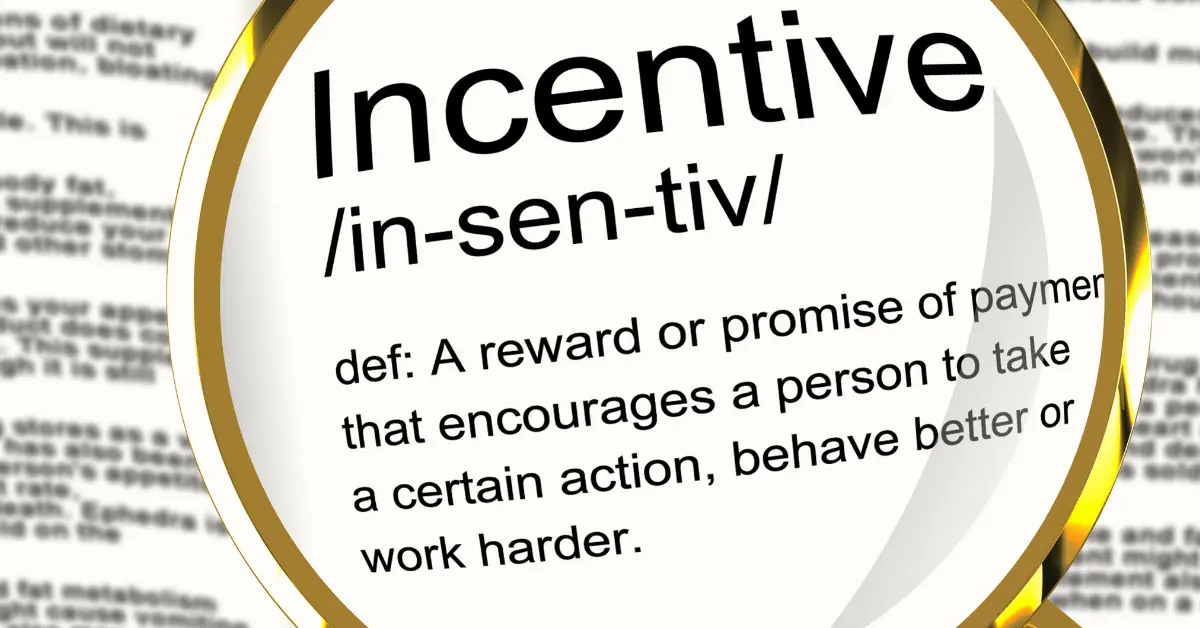Incentive marketing is a type of marketing strategy that uses rewards or incentives to motivate customers or employees to take specific actions, such as making a purchase, completing a survey, or referring friends to a business.
Incentives can come in various forms, such as discounts, coupons, free products, cash rewards, and other rewards that are attractive to the target audience. In this article, we will explore the basics of incentive marketing, how it works, and its benefits for businesses.
Table of Contents
- Introduction
- Understanding Incentive Marketing
- Types of Incentives
- Benefits of Incentive Marketing
- How to Use Incentive Marketing
- Examples of Incentive Marketing
- Challenges of Incentive Marketing
- Tips for Successful Incentive Marketing Campaigns
- Conclusion
- FAQs
Introduction
In today’s highly competitive business world, businesses need to attract and retain customers to survive and grow. Incentive marketing is a powerful tool that can help businesses achieve these goals.
By offering incentives, businesses can motivate customers to take specific actions that benefit the business. Incentive marketing is not only beneficial for businesses, but it can also be attractive to customers who want to get more value for their money.
Understanding Incentive Marketing
Incentive marketing is a type of marketing strategy that uses incentives to motivate customers to take specific actions that benefit the business.
The goal of incentive marketing is to encourage customers to make a purchase, complete a survey, refer friends, or take other actions that help the business achieve its objectives. Incentives can be tangible or intangible, and they can vary in value depending on the action that is being incentivized.
Types of Incentives
Incentives can come in various forms, and they can be customized to suit the target audience. Here are some of the most common types of incentives used in incentive marketing:
Discounts and Coupons
Discounts and coupons are the most common types of incentives used in incentive marketing. They offer customers a reduction in price, making the product or service more affordable.
Free Products
Businesses can offer free products to customers who take specific actions, such as making a purchase or referring friends. This can be an effective way to introduce new products to customers and incentivize them to try them out.
Cash Rewards
Cash rewards are another popular incentive used in incentive marketing. They offer customers a financial incentive to take specific actions, such as completing a survey or referring friends to the business.
Loyalty Programs
Loyalty programs offer customers rewards based on their purchase history. The more customers spend, the more rewards they can earn. Loyalty programs can be an effective way to encourage repeat business and build customer loyalty.
Benefits of Incentive Marketing
Incentive marketing offers several benefits for businesses. Here are some of the most significant benefits:
Increased Sales
Incentive marketing can help businesses increase sales by motivating customers to make a purchase.
Improved Customer Engagement
Incentive marketing can also help businesses improve customer engagement by offering rewards that are attractive to the target audience.
Customer Loyalty
Incentive marketing can be an effective way to build customer loyalty by offering rewards to customers who make repeat purchases.
Cost-Effective Marketing
Incentive marketing can be a cost-effective way to promote a business by offering rewards that are attractive to the target audience.
How to Use Incentive Marketing
Here are the basic steps to using incentive marketing effectively:
Define Your Objectives
The first step in incentive marketing is to define your objectives. What specific actions do you want customers to take? What benefits do you want to offer customers in return for taking those actions?
Identify Your Target Audience
Once you have defined your objectives, the next step is to identify your target audience. Who are the customers you want to incentivize, and what rewards would be attractive to them?
Choose Your Incentives
Based on your objectives and target audience, choose the incentives that will be most effective in motivating customers to take the desired actions.
Promote Your Incentives
Promote your incentives to your target audience through various marketing channels, such as email, social media, or advertising.
Measure Your Results
Track the results of your incentive marketing campaign to determine its effectiveness. Analyze metrics such as sales, customer engagement, and customer loyalty to see if the incentives are achieving your objectives.
Examples of Incentive Marketing
Here are some examples of incentive marketing in action:
Starbucks Rewards Program
Starbucks offers a loyalty program that rewards customers for making purchases. Customers earn points for every purchase they make, which can be redeemed for free drinks and food items.
Amazon Prime
Amazon offers a subscription service called Amazon Prime that provides customers with free two-day shipping, access to streaming video and music, and other benefits. Customers pay an annual fee to join the program.
Referral Programs
Many businesses offer referral programs that reward customers for referring friends to the business. For example, a gym might offer a free month of membership to customers who refer a friend who signs up for a membership.
Challenges of Incentive Marketing
While incentive marketing can be an effective strategy, there are also some challenges to consider:
Cost
Offering incentives can be costly, especially if they are high-value rewards.
Fraud
Incentive marketing can also be vulnerable to fraud if customers attempt to game the system to receive rewards they are not entitled to.
Customer Expectations
Incentives can create customer expectations, and if those expectations are not met, customers may become disappointed or even angry.
Tips for Successful Incentive Marketing Campaigns
Here are some tips to help you create successful incentive marketing campaigns:
Set Clear Objectives
Be clear about what actions you want customers to take and what benefits you will offer in return.
Know Your Audience
Understand your target audience and what incentives are most likely to motivate them.
Keep It Simple
Make it easy for customers to understand how to participate in the incentive program.
Monitor Results
Track the results of your incentive marketing campaign and adjust your strategy if necessary.
Conclusion
Incentive marketing is a powerful tool that businesses can use to motivate customers to take specific actions that benefit the business. By offering rewards or incentives, businesses can increase sales, improve customer engagement, and build customer loyalty.
However, incentive marketing also has some challenges that must be considered, such as cost, fraud, and customer expectations. By following the tips outlined in this article, businesses can create successful incentive marketing campaigns that achieve their objectives.
FAQs
- Is incentive marketing effective?
Yes, incentive marketing can be an effective way to motivate customers to take specific actions that benefit the business.
- What types of incentives are most effective?
The most effective incentive is giving your current and prospective clients complimentry vacations.
- What are some common challenges of incentive marketing?
Common challenges of incentive marketing include cost, fraud, and customer expectations.
- How can businesses measure the effectiveness of their incentive marketing campaigns?
Businesses can measure the effectiveness of their incentive marketing campaigns by tracking metrics such as sales, customer engagement, and customer loyalty.
- What are some tips for creating successful incentive marketing campaigns?
Tips for creating successful incentive marketing campaigns include setting clear objectives.
In summary, incentive marketing is a powerful strategy that businesses can use to motivate customers to take specific actions that benefit the business. By offering rewards or incentives, businesses can increase sales, improve customer engagement, and build customer loyalty.
However, it’s important to consider the challenges and potential drawbacks of incentive marketing, such as cost, fraud, and customer expectations. By following the tips outlined in this article, businesses can create successful incentive marketing campaigns that achieve their objectives and deliver real results.




0 Comments